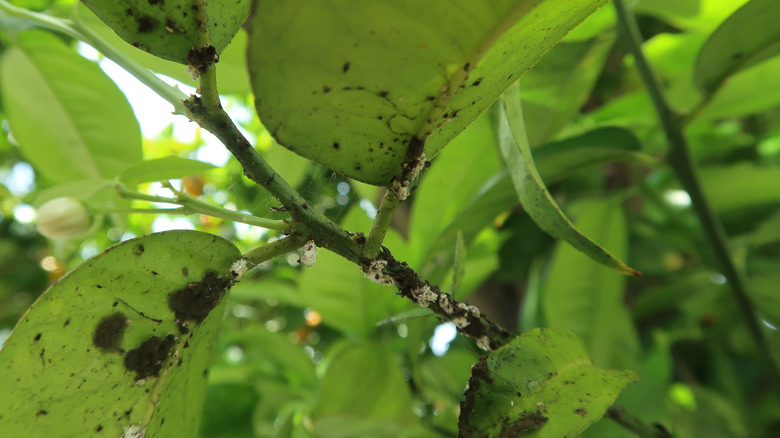If you’ve noticed a dark, unsightly substance clinging to your plant leaves, it’s most likely sooty mold. This type of mold often finds a home on hostas that are situated beneath trees—especially those harboring sap-sucking insects like aphids. These pests feed on the tree and produce a sugary waste called honeydew. The honeydew drops down onto the leaves of your hostas and acts like a magnet for sooty mold spores. Now, the mold itself usually doesn’t harm the plant. It’s not like some plant diseases that attack the internal systems. However, this doesn’t mean you should ignore it. The mold can get too thick, depriving the plant’s leaves of sunlight. When that happens, your hosta is in trouble. Your once lush, green hosta becomes a weak, discolored version of itself. And remember, a stressed plant is more susceptible to other diseases and pests.
So, taking steps to remove the mold is crucial, not only for aesthetic reasons but also for the plant’s overall health. But here’s the catch: just cleaning the mold off the leaves won’t solve the problem if you don’t address the root cause — those sap-sucking pests. You’ll need to take a two-pronged approach to liberate your hosta from this dark, grimy issue. Treating both the hosta and the taller plants above it for pests will ensure that the sooty mold doesn’t make an unwelcome comeback.
How to clean sooty mold off your hosta

You’ll first want to investigate the surrounding area, especially if your hosta is planted beneath a taller tree or shrub. More often than not, the real culprits are lurking in those branches above. To determine if that’s the case, look closely at the leaves and branches for signs of a pest infestation. These pests are easy to miss at first glance, but they’re usually there if you’re dealing with a sooty mold issue. If you see clusters of small, immobile insects, tiny, fast-moving bugs, or if you notice a sticky residue on the leaves, that’s your confirmation.
After pinpointing the root cause, roll up your sleeves and grab a bucket of warm, soapy water. You’ll also need a soft cloth or sponge. Gently scrub the hosta leaves, focusing on the areas covered with sooty mold. You might be tempted to go at it vigorously, but be gentle. Plant leaves can be somewhat delicate, and the last thing you want is to damage the plant while trying to help it. Once done, wash off all the soap residue with clean water. You’re halfway there now that you’ve cleaned up the sooty mold. But let’s not forget the second part of this plant-saving mission: dealing with those sap-sucking pests that started this whole mess. You must eliminate them to ensure the mold doesn’t come back, haunting your hosta and you all over again.
Treating the plant for pests and preventing future mold growth
Treating both the hosta and the taller plants above it ensures a more comprehensive solution to your sooty mold issue. To treat your plant, first, grab some insecticidal soap and spray it generously on your hosta leaves. The idea is to cover as much surface area as possible, both the top and bottom of the leaves. This soap will kill the bugs and soften any stubborn mold spots that didn’t come off during your initial cleaning. Timing is key here. It’s always best to spray in the evening to keep the soap more moist, making it more effective. Rain will also help wash away the insecticidal soap and any remaining mold, so it might best to watch your weather forecast to understand the best day for the treatment.
But don’t forget about those taller plants above your hosta! They’re likely the original source of your pest problem. Make sure you also spray their leaves with a more potent insecticide designed for trees and shrubs. If those pests are left untreated, they’ll keep producing sugary honeydew, and you’ll find yourself back at square one. Remember, if the sooty mold comes back, it’s a sign you’ve still got some pest hunting to do. Keep an eye on your garden, and you’ll keep these issues at bay.